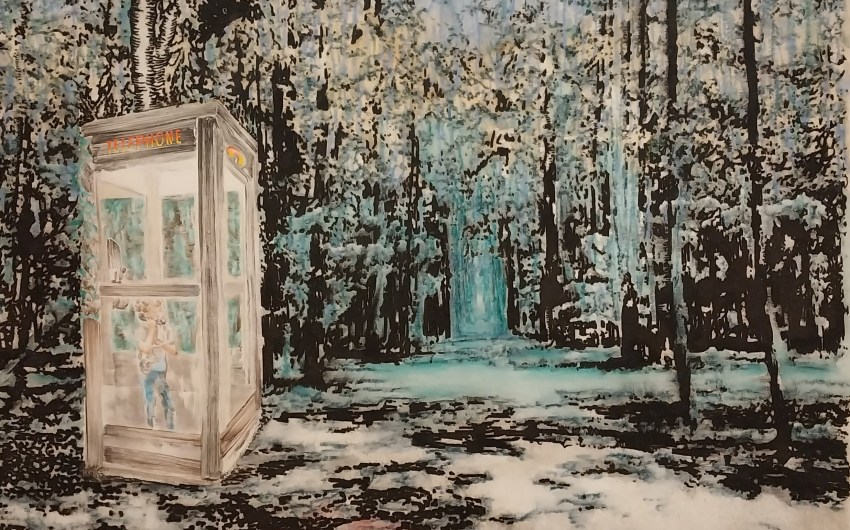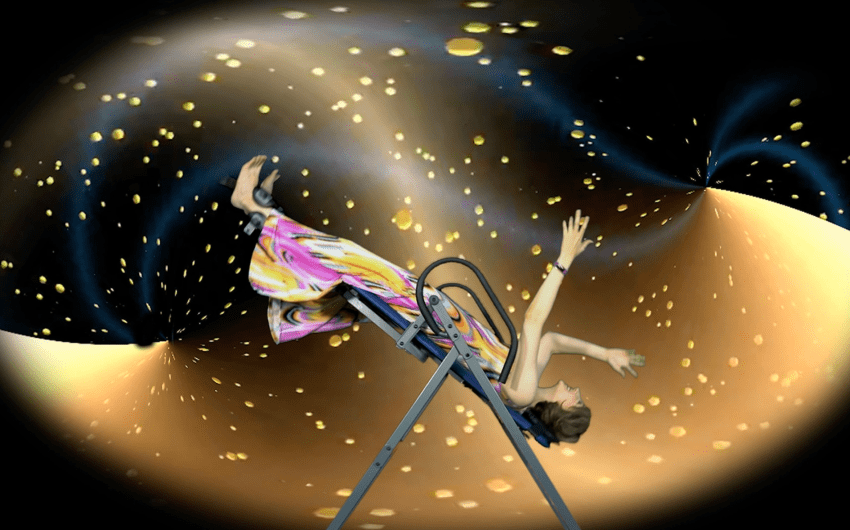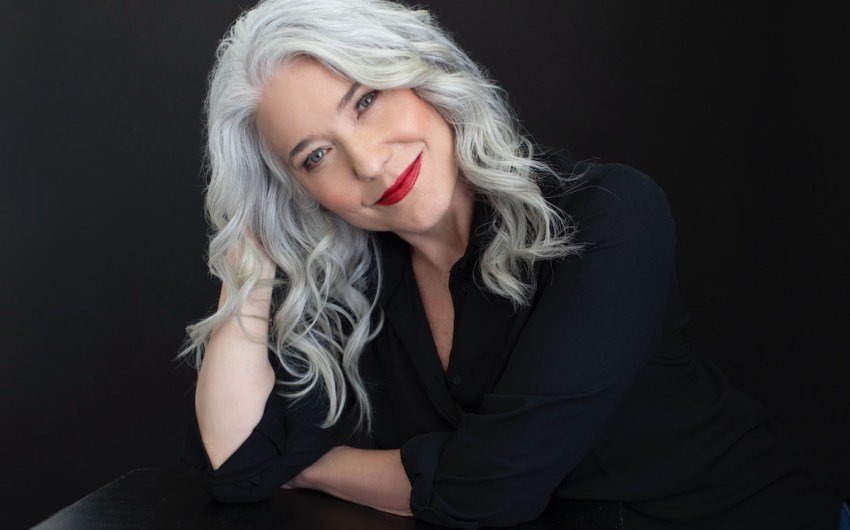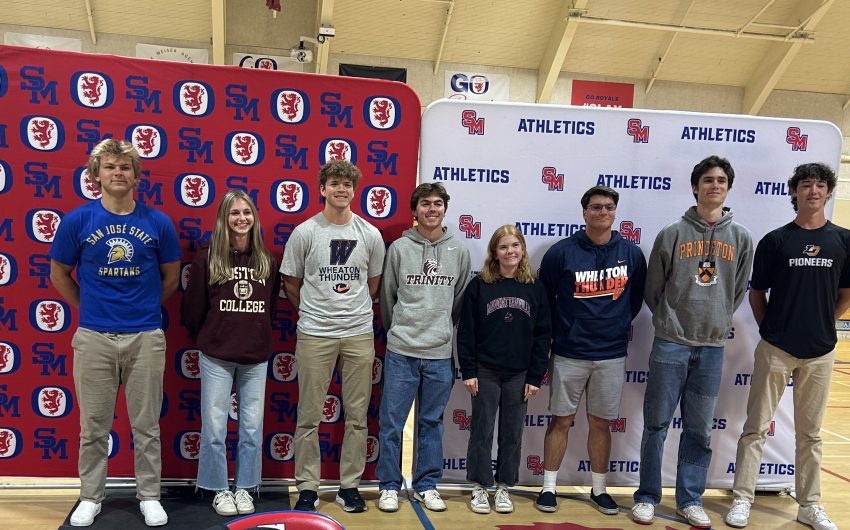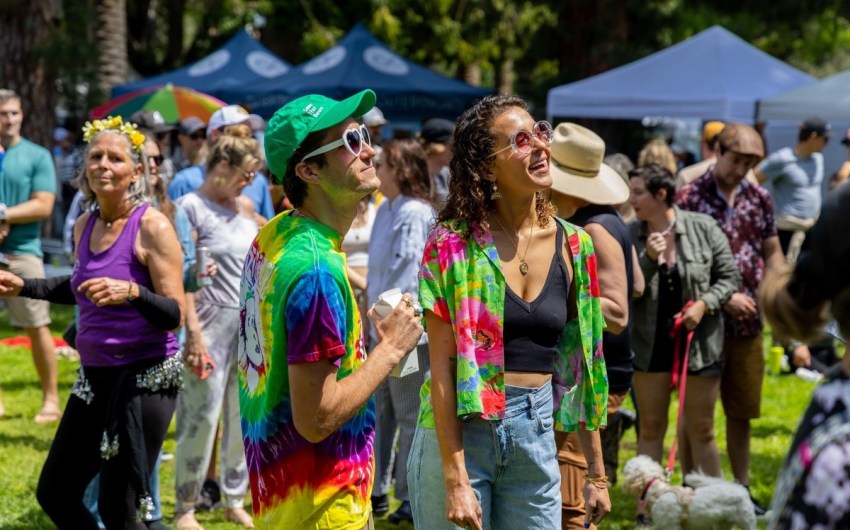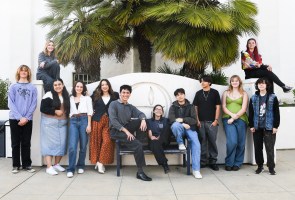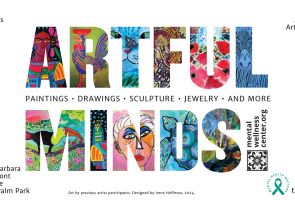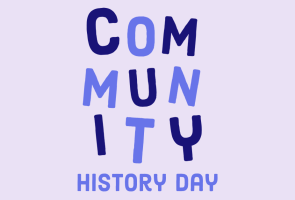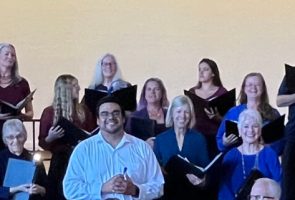Vintage Visions of King
Santi Visalli’s Images of MLK at 1967 anti-Vietnam Rally Pay Timely Homage to the Civil Rights Icon at CAW
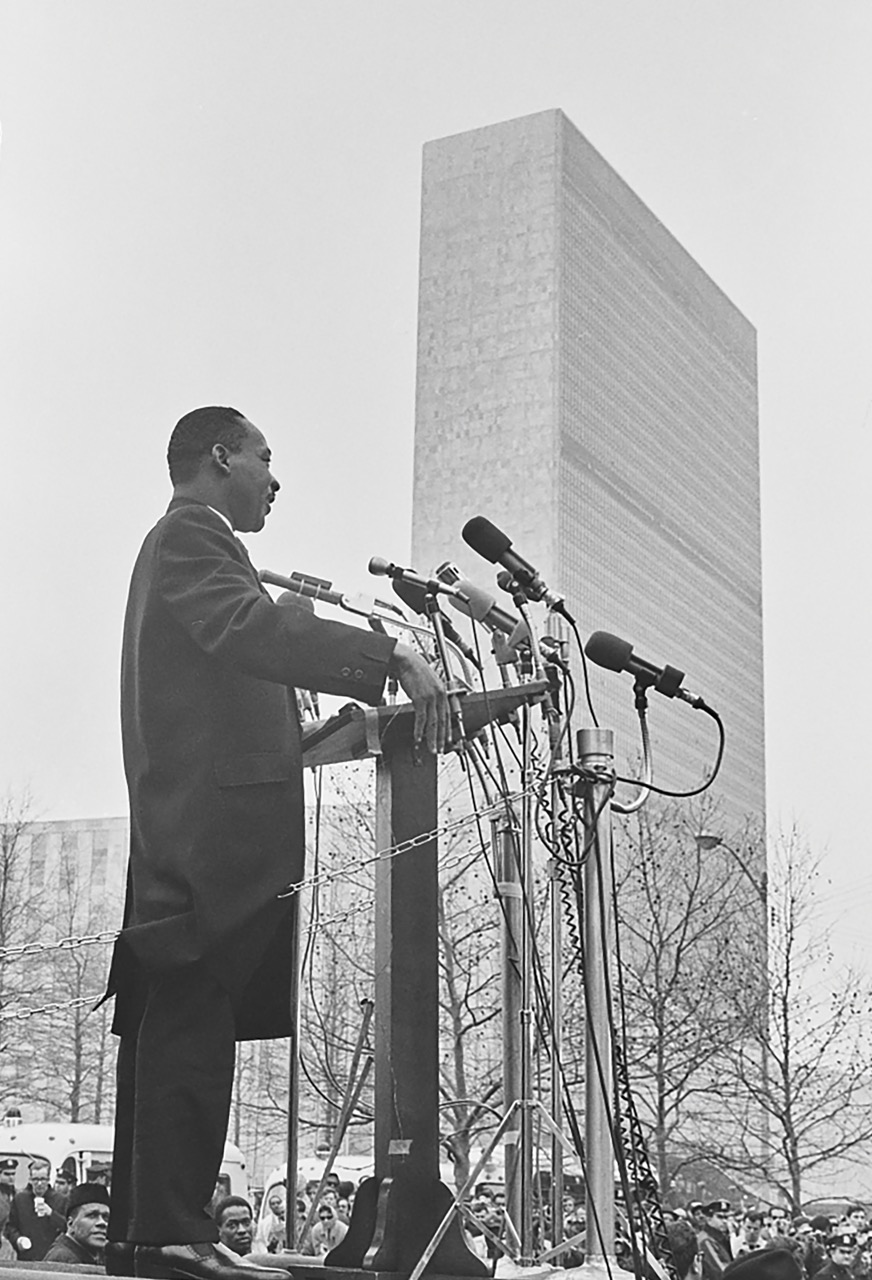
In keeping with the longstanding and expanding presents of local tributes to Martin Luther King Jr. around his birthday, locals gathered in droves to honor the iconic Civil Rights leader. And in addition to the annual De La Guerra Plaza rally and multi-purpose presentation at the Arlington Theatre, the First Methodist Church drew in a packed house to pay tribute to a true local legend, (Joy) Sojourner Kincaid-Rolle, who died last November at age 80.
Among her many other achievements, Kincaid played a pivotal role in galvanizing the Martin Luther King Day Committee’s momentum, starting in 1988. In a moving three-hour memorial/celebration of life event for the heralded and hugely influential writer, teacher, activist, playwright, and general community powerhouse, emotional tributes and hymns poured forth. Photographer/drummer Rod Rolle, her husband and ally for 40 years, summed it all up with a personal mantra — “this is a good day, Sojourner.”
But the focus on MLK continues, with greater attention placed on photography and personal/historical interests. With the short run pop-up exhibition Capturing and Recapturing: A Day in the Life of Dr. Martin Luther King, Jr., showing at CAW from January 22 to February 4, we find vivid evidence of Dr. King in action, through the lens of famed photographer Santi Visalli, a Santa Barbara resident for many years.
The show consists of images shot at the 1967 anti-Vietnam rally in Washington, which the photographer worked on assignment for an Italian magazine. The images span a range of sharply composed frames and a survey of observers ranging from Stokely Carmichael to William F. Buckley. Some of the images here have never been exhibited before, and the inclusion of a few images from the Reverend’s funeral — only a year later — adds a poignant postscript to the show.
Visalli, the subject of the Santa Barbara Museum of Art’s 2021 exhibition Santi Visalli at 90, is a renowned photojournalist and fine art photographer, whose work graced over 50 magazines and newspapers, including TIME, Life, The New York Times, and countless others. His international work was also featured in coffee table books published by Rizzoli.
Taking on the curatorial duties for the CAW project, in her debut as a curator, is former Santa Barbara Mayor Helene Schneider, who has appeared and spoken at many a past MLK event in town. The project grew out of a lunch meeting with Visalli where he mentioned wanting to find a public forum for these special “lost” images. Schneider suggested CAW, a vibrant space for pop-up art shows and more.
“I mentioned that I served on the Board of Directors that oversees activities there,” she commented, “at which point, Santi looks straight at me, bangs his hand on the table, and says, ‘okay, then. You are the Curator.’ I mean, how could I say ‘no?’”
She worked with various parties to bring it all together, including Rod Rolle and MLKSB Committee head E. onja Brown Lawson. Schneider notes that her first curatorial project “has been exciting, a little overwhelming, and a true honor to work with Santi. There are so many details in putting on a show — choosing the images, designing the space, securing sponsors, marketing the event, reaching out to teachers, so many details.”
One important detail is the apt exhibition title itself, Capturing and Recapturing. As she explains, “the title is meant to connect both the images we see from that day in 1967 to the story of how those images were lost and found again. Santi’s eye and camera first captured the images of Dr. King from a moment in time, and then over 50 years later through persistence and I’m sure a lot of complicated legal back and forth, he has been able to recapture those images again.
“My first reaction seeing these photos was awe: the size of the crowd at the rally, recognizing notable people from that time, but also Dr. King’s calm, thoughtful and very close and personal gaze to those around him and straight into the camera. Then, I read the speech he gave — it’s so provocative. One sentence particularly resonates with me, ‘Our arrogance can be our doom.’”
For her part, Schneider mentioned “I learned how daring it was for him at the time to speak out against the Vietnam War, as many in the civil rights movements were concerned that this new focus abroad would dilute their effectiveness for change at home. Dr. King hoped that this speech would dissuade those fears and bring to light the common goals inherent between global peace and domestic justice.
“Including some images of his funeral which occurred just one year later reminds us of just how powerful his message was.”
Premier Events
Sun, Apr 28
6:00 PM
Santa Barbara
AHA! Presents: Sing It Out!
Thu, May 02
5:00 PM
Santa Barbara
Things with Wings at Art & Soul
Sat, May 04
10:00 AM
Lompoc
RocketTown Comic Con 2024
Sun, Apr 28
11:00 AM
Santa Barbara
Santa Barbara Earth Day Festival 2024
Wed, May 01
7:30 PM
Santa Barbara
American Theatre Guild Presents “Come From Away”
Thu, May 02
5:00 PM
Santa Barbara
100th Birthday Tribute for James Galanos
Thu, May 02
5:00 PM
Santa Barbara
Meet the Creator of The Caregiver Oracle Deck
Fri, May 03
4:00 PM
Santa Barbara
Santa Barbara Fair+Expo “Double Thrill Double Fun”
Fri, May 03
8:00 PM
Santa barbara
Performance by Marca MP
Sat, May 04
10:00 AM
Solvang
Touch A Truck
Sat, May 04
11:00 AM
Santa Barbara
Mental Wellness Center’s 28th Annual Arts Faire
Sat, May 04
11:00 AM
Santa Barbara
Community History Day
Sat, May 04
3:00 PM
Solvang
The SYV Chorale Presents Disney Magic Concert
Sun, Apr 28 6:00 PM
Santa Barbara
AHA! Presents: Sing It Out!
Thu, May 02 5:00 PM
Santa Barbara
Things with Wings at Art & Soul
Sat, May 04 10:00 AM
Lompoc
RocketTown Comic Con 2024
Sun, Apr 28 11:00 AM
Santa Barbara
Santa Barbara Earth Day Festival 2024
Wed, May 01 7:30 PM
Santa Barbara
American Theatre Guild Presents “Come From Away”
Thu, May 02 5:00 PM
Santa Barbara
100th Birthday Tribute for James Galanos
Thu, May 02 5:00 PM
Santa Barbara
Meet the Creator of The Caregiver Oracle Deck
Fri, May 03 4:00 PM
Santa Barbara
Santa Barbara Fair+Expo “Double Thrill Double Fun”
Fri, May 03 8:00 PM
Santa barbara
Performance by Marca MP
Sat, May 04 10:00 AM
Solvang
Touch A Truck
Sat, May 04 11:00 AM
Santa Barbara
Mental Wellness Center’s 28th Annual Arts Faire
Sat, May 04 11:00 AM
Santa Barbara
Community History Day
Sat, May 04 3:00 PM
Solvang

